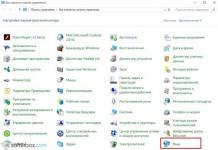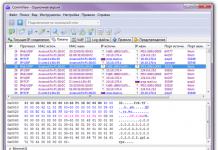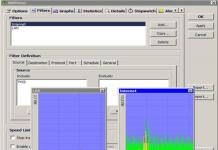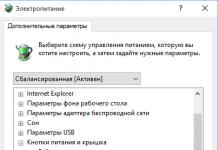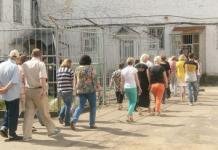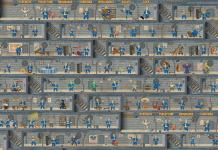The Flir One household thermal imager from the Flir company, world famous for its thermal imagers, is perhaps the first device of its kind to announce its entry into a truly mass market. The fact is that even though thermal imagers and other night vision devices were born in the last century, they have not yet reached the mass user. First of all, this concerns thermal imagers, devices that allow you to see thermal radiation directly, and not just amplify weak light. We didn't get there until Flir One came along.
Flir One, with its price around $250, is a real breakthrough in the market, where entry-level devices cost at least three times more, or even more. Now, thanks to the efforts of Flir, a thermal imager is available to any wealthy householder. It is enough to have only a smartphone on Android or iOS, and the thermal imager itself, connected to the data port (USB in the case of Android or Lighting for Apple). The thermogram image is displayed on the smartphone screen; you can take photos, shoot videos, and measure the temperature of specific areas.
Flir One differs from the thermal imager familiar to professionals not only in the absence of a screen on the device, but also in the presence of two cameras at once. One camera is a conventional optical one, the second one directly perceives infrared radiation. The symbiosis of two cameras makes it possible to level out the catastrophically low resolution of the infrared camera. We are talking about kilopixels (megapixels are still a long way off in accessible infrared photography). Matrices sensitive to the desired part of the infrared spectrum of electromagnetic radiation are too expensive. And optics that freely transmit the required part of IR radiation with low distortion also cost a pretty penny. Therefore, the manufacturer took the contours of the visible image from the device’s conventional camera and superimposed data from the infrared camera on them. As a result, the user receives at least some kind of image that allows him to make out what is visible there. For the same reason, Flir software can use your phone's flashlight to highlight the outlines of objects if it's really dark.
However, despite the fact that the Flir One has low resolution, the device is very useful in studying the world around us. Built on state-of-the-art bolometers, Flir One has a reading sensitivity of less than one degree Celsius. For the same reason, Flir One is constantly calibrated, because... During operation, the bolometer matrix heats up, which leads to distortion and inaccuracies in the provision of information.
So, I have an Android smartphone and a Flir One thermal imager in my hands, it’s time to try them out, take a number of measurements and dispel, and perhaps confirm, several popular myths.
Using a thermal imager you can track the animal's tracks
In the old movie "Predator", an alien creature was hunting one of the best representatives of the Aryan race in the tropical forests. And she didn’t just hunt, but hunted using high-tech weapons. Including the use of vision in different parts of the spectrum. In the continuation of the film, a new alien creature, several years after its predecessor was dismantled into atoms, began to hunt one of the best representatives of the African race, but in the jungle of a big city. And again, the alien hunter made full use of his thermal vision. Especially in terms of searching for traces of a fleeing, frightened victim.
From left to right: a dog standing in place for a couple of seconds, traces of a dog standing for a couple of seconds on the laminate, footprints of a person on the laminate.
And it's true. In reality, you can also track the tracks of animals and even people. Only now I was able to capture the footprints on the smooth laminate, and only after walking on it with bare feet and paws.
Using a thermal imager you can find a black cat in a dark room
An ancient joke implies that the cat will be difficult to find, especially if it is not there.
Pet thermograms
But the joke will not work if the finder is equipped with a thermal imager. Cats, and other warm-blooded animals, can be found in dark rooms without any problems.
Is thermal imaging possible in a mirror?
Many people wonder whether heat will be reflected in an ordinary mirror? They also wonder if you point a thermal imager at a mirror, whose temperature it will measure. The mirror or what is reflected in it?
Reflections of objects in Flir One: a hot pipe in the bathroom is reflected in the tiles, a person in the mirror.
The issue is resolved simply. We need to conduct an experiment. It turns out that a thermal imager is excellent at capturing and determining the temperature of what is displayed in a mirror or other reflective surface, such as tiles. If you want to measure the temperature of the reflective surface itself, then in the Flir One settings there is a special mode that allows you to measure the temperature of the reflective surface, you just need to remember to use it.
Corded phone does not consume power
Many people believe that landline telephones, those that are connected only by wiring to a telephone exchange, do not waste energy at all. Ancient telephone sets equipped with a rotary dial may not consume anything, but the rest of the equipment...
From left to right: radiotelephone with external power, wired telephone without power, meters for hot and cold water.
Although the landline telephone does not do anything, it heats up when connected to the line. And it heats up well. The radiotelephone consumes even more energy. However, for this it has a separate AC power adapter.
The electrical panel with active devices also heats up.
And if you walk around the apartment, you will find that even safety devices, such as UZM, RCD, DIN-rail voltmeters or thermal splitter circuit breakers, get hot. They consume energy to keep us safe. But heating power wires from overload is not a good thing. There should be no noticeable heating.
Modern electronics use as much energy as old ones
New computers, phones, video cards, routers, video consoles are definitely more powerful than their predecessors. And they must consume more energy. But, do not forget about the development of technology. A modern car consumes much less fuel per hundred than its furry ancestor, and it has several times more power. It's the same with electronics.
Different electronics heat up differently. Left: microserver with natural ventilation and the greatest heating in the area where the power supply transformer is located. Right: Cisco Wi-Fi router and ZTE ONT.
Productivity increases and energy consumption decreases. Of course, one day this will come to a technological end, but it is still very far away. So an ancient Cisco router uses more energy for heating than a modern ZTE. Moreover, ZTE has twice as much productivity. And a microserver ten times more powerful, glows at a temperature even lower than Cisco! Progress does not stand still, that's for sure.
A plastic window retains heat better than wood
Technological progress has also reached building materials. Modern plastic windows have come to our homes. They look better, they don’t require regular painting, they don’t warp every season, and they seem to be warmer.
Plastic window (right) versus wooden (left)
But you shouldn’t rush to the trash heap with your old wooden windows. If you modify the window itself a little, coat the glass with sealant, and install normal seals, then the wooden window turns out to be completely fine. Especially when you compare it with economy class windows. The main leaks, here and there, come through the perimeter of the part being opened, through the seals. And if you put a good, soft, polyurethane seal on a wooden window, then such a window will work no worse than a plastic one in terms of sealing the room.
In houses of the P-3 series, the seams between the panels are not insulated
I have often heard from different people that in 16-story panel buildings the seams between the panels are not insulated and that is why it is cold in the apartments. And if you want warmth, then you need to drill out everything in the joints between the ceiling and the street wall, insulate it and redo it.
Holes in the house of the P-3 series
The statement is quite controversial. On many houses of the P-3 series, external joints are properly coated with mastic. And if you look from the inside of the apartment, then, of course, “cold bridges” are visible, but they are not that extensive, and they are not present in every room.
Cold bridges are places where we lose heat
A lot can be said about heat loss in modern private construction. And all to no avail. The average person is not ready to pay many thousands for an energy-efficient building. It’s much more profitable to simply sink a larger building and that’s it.
The inside of the house is made of foam blocks. You can see the laying of foam blocks on cement mortar and cold bridges (the mortar itself).
In Europe, for example, modern houses that do not meet energy efficiency requirements cannot be built at all. Since 2018, only buildings that consume no more than 15 kW/m2 per year can be erected in the European Union. And in Russia, where standards for energy-efficient buildings are just beginning to be introduced, an ordinary private house consumes 300 or more kW/m2 per year. According to the classification of Europeans, such buildings belong to buildings built before the 1970s and are actively insulated. But that’s where the cost of energy is sky-high. But in our country, the issue of insulating buildings arises only when residents begin to feel the temperature drop below 23 degrees Celsius. And then, in this case, they think about more powerful batteries, and not about insulation.
A brick house is not a champion in energy efficiency. A bright spot under the window: the battery is indoors.
And as long as energy resources are cheap, nothing will move. You and I will continue to flood the streets, often with banknotes. After all, the thoughts of a private developer rarely extend beyond foam blocks and bricks.
Heat leaks from the “framework”. Problems in the ceiling junction area.
But the problem is not only in ancient building materials and structures. Even modern material can turn into a waste of money in inept hands. By the way, it is in such cases that thermographic photography can be very, very useful.
Using a thermal imager you can identify residential buildings in winter
Working country real estate in winter is a luxury not available to everyone. The house needs to be heated constantly, because freezing water can spoil not only the water supply, but also the drainage system. And a good house, not used in winter, will gradually gain moisture, which will not be easy to get rid of in summer.
Houses in which no one lives in winter, but a minimum level of heating is maintained. Heating is caused by windows and small leaks.
Using a thermal imager, you can easily determine which house maintains the minimum temperature and which is abandoned by the owner until the summer.
It's not just heated homes that emit heat.
It is not only buildings with poor thermal insulation that warm the street. Any object that has good contact with the ground, or even better, is partially buried in it, can be warmer than the surrounding air.
For example, heat is actively lost by buildings through the foundation. Recessed concrete slabs or “ribbons” take the heat of the earth from the depths and squander it during the cold season. Therefore, zealous owners insulate not only the residential parts of the house, but also the basement along with the blind area. In this way, the problem of heat loss and unnecessary heaving of the soil around the building during spring thaws is partially eliminated.
Strangely, the lights are off, but the street lamp still warms the atmosphere.
But it’s not only uninsulated buildings built using Stone Age technologies that warm the atmosphere. Energy is also lost through faulty electrical equipment. The picture above shows a street lamp. It worked at night, but due to a faulty or incorrectly designed “power supply”, after turning off the power, it continues to emit heat. This is how we lose electricity and money.
Can Flir One be used to track game?
In general, any modern thermal imager can be used for such purposes. After all, game radiates heat, and it can be seen on the screen.
But the Flir One model is far from the best suited for hunting. Firstly, the low resolution and wide viewing angle of the thermal imaging camera will not allow you to distinguish living creatures at the desired distance. And secondly, looking at your phone while hunting would only make you a fool. It’s inconvenient, and you need to hold the gun, not the phone!
Using a thermal imager you can find hidden bookmarks
If there is something electronic in the wall or behind it, and this something works, then it can be quite easily identified using a thermal imager. Even the most modern thermal insulation material will allow particles of heat to pass through, which will sooner or later come to the surface.
The thermal imager reveals previously hidden things. Left: A microserver is installed behind the wall. Right: A heating pipe runs through the wall.
In addition to searching for hidden bookmarks, thermal maps are useful for searching for heating elements hidden in walls. Well, and other surprises from the builders.
Instead of an epilogue
Getting a new toy that expands the range of senses is great. Let it be as primitive as Flir One, but even with it you can learn and discover a lot of new things! Therefore, Flir One is a valuable purchase and useful in the household. And as a gift, any man will like it.
UPD.: For those who don’t believe about heating machines and wires, I present this picture:
How terminal blocks, automatic machines and electricity meters heat up
From the thermogram of the electric meter it is clear that one of the terminals to which the aluminum wire fits is heating up. One of the machines is also heating up, passing an electric current through itself (apparently the wire also goes through it, it’s impossible to make out in this web). Moreover, the terminal on the bag gets hot and the lower terminal on one of the black machines gets slightly warm. The point here is that aluminum wires need to be tightened regularly, since the metal is soft and gradually spreads under load. But, of course, no one does such nonsense. Electric meters also consume energy, and judging by the heating, they consume a lot of it. It is possible that the energy consumption of the meter, among other things, depends on the current (i.e., energy consumption by the consumer) flowing through the meter (you need to know what the design of the meter is).
A thermal imager is a device designed to determine thermal radiation on the surface under study using a non-contact method. The temperature distribution is displayed on the display as a color picture, where different temperatures correspond to different colors.
Thermal imagers are widely used in the field of electric power, thermal power, security systems, military and medical equipment, hunting, etc...
A thermal imager is a very useful thing, at least for preventing energy accidents and their consequences. Using a thermal imager, you can easily determine heat loss in a building and identify hidden thermal insulation defects. A thermal imager can also identify leaks in the water supply system behind the wall or the coolant in the “warm floor” system. In the field of electronics, a thermal imager can identify short circuit locations, see the thermal operating conditions of radio-electronic devices, etc...
I was looking for a thermal imager to repair laptops. It's no secret that very often motherboards go into a short circuit along the primary or secondary power circuits. To determine the defective element, it was necessary to connect a laboratory power supply to a circuit with a short circuit, and by probing with fingers, determine the element that went into the short circuit. There were situations when the short circuit was incomplete, and by probing it was not possible to find the defect, since the failed element was heating up, but not much. The thermal imager allows you to quickly identify all of the above defects, even without connecting a laboratory power supply, since the defective element has time to heat up before the built-in protection of the motherboard works (if there is a short circuit in the secondary circuits) or the protection of the laptop power supply works (if there is a short circuit in the primary power circuits laptop).
Until recently, thermal imagers were very expensive, the price varied from 100 thousand rubles and above for the simplest models of thermal imagers. But progress does not stand still. Budget options for thermal imagers starting at 15 thousand rubles and above began to appear. Initially, I wanted to buy a budget version of a thermal imager from Aliexpress, but after reading the reviews I changed my mind, since these thermal imagers only see large temperature differences. They do not notice a small difference in temperature deviation. Somewhere I saw advice that for the same money you can buy a more serious Flir One or Seek Thermal thermal imager. Although a thermal imager is said loudly, these are just attachments for a smartphone (Android or iPhone).
A month later I received a thermal imager. True, the factory packaging was a little wrinkled at the corners.


Thermal imager equipment:
rubber protective cover
two rubber stickers - dampers
charging cable
two micro USB adapters to rotate the device relative to the smartphone
long belt for attaching a protective cover to the neck
Main technical characteristics of Flir One™ 2:
MSX® technology - combining conventional and thermal images
Lepton® professional sensor
thermal sensor resolution 160x120 px.
optical sensor resolution 640x480 px.
temperature range -20+120°C
sensitivity 0.1°C
measurement accuracy ±2°C
automatic calibration
update frequency<9 Гц
viewing angle 40°
9 display palettes
image rotation (0°, 90°, 180°, 270°)
recording photos and videos
Built-in battery with a capacity of 350mAh, powered by its own battery and does not affect the battery of the connected device
Battery life up to 1 hour
Full charge of Flir One lasts 40 minutes (from a 1 A power supply)
weight - 30 grams

To work with Flir One, you need Android OS no lower than 4.4.2 with support for an OTG USB port:
Sequencing:
charging the device
download and run the program of the same name, after which the program will ask you to attach and enable Flir One
insert the thermal imager into the micro USB port of the smartphone
turn on the thermal imager with the power button, after which a thermal image should appear
The Flir One program is quite simple and learns quickly.
Main functions of the Flir One program:
choice of color palette
selecting photo/video shooting mode
macro mode (in this mode, the slider is activated, when moving it we combine the image of the thermal and optical cameras)
we can also disable/enable automatic calibration
in the program window you can control the level of charge of the Flir One battery
There are 4 emissivity options (matte, semi-matte, semi-gloss, glossy). The emissivity cannot be specified in this program. For an expanded selection of emissivity and additional options, download the Flir Tools program, there is a whole table with various materials. You can also enter the emissivity manually in Flir Tools. But Flir Tools requires registration and is much more difficult to learn than Flir One.



MSX® technology combines visible and thermal imaging to produce a clearer, more detailed image that even reads text. This function requires visible light to operate. Therefore, when shooting in the dark, turn on the backlight.


After turning on the thermal imager for the first time, I began to study the capabilities of this device, which I was very pleased with, especially the high sensitivity. For example, if you write 123 with your finger on a wooden surface, then the thermal trace from the finger, and therefore the inscription, is visible for some time. If you walk barefoot around a room, heat traces will remain visible for a long time, especially on the carpet. I also tested the thermal imager in complete darkness; to my surprise, the image of the thermal imaging camera was of very good quality; it was easy to navigate around the apartment in complete darkness.

Here is an example of a thermal image of a laptop motherboard, which is in a disconnected state, but connected to the laptop's power supply. Power consumption in standby mode is about 0.38 W. The sensitivity of the thermal imager is enough to see where such insignificant power is spent. The network controller and the south bridge (on the back of the board) are in active mode. A temperature difference of less than 1°C is clearly visible in a thermal image.
The Internet is full of comparison examples between Flir One and Seek Thermal. But it’s much more interesting to compare Flir One 2 with a mid-price thermal imager Flir E40 with a thermal sensor resolution of 160x120 px (300 thousand rubles), and a high-price thermal imager Flir T360 with a thermal sensor resolution of 320x240 px (1 million rubles).

Thermal imagers Flir One 2, Flir E40, Flir T360 respectively.
Example No. 1. Loaded circuit breaker. 
Flir One 2

Flir E40

Flir T360
Example No. 2. Phase C contact defect under symmetrical load. As you can see, the defective contact was identified very easily at the stage of early diagnosis. Moreover, its temperature is only 10 degrees higher than the temperature of phases A and B. With such a deviation, the equipment can still be operated. 
Flir One 2

Flir E40

Flir T360
Example No. 3. Working asynchronous motor. 
Flir One 2

Flir E40

Flir T360
Example No. 4. Heating of the coupling. 
Flir One 2

Flir E40

Flir T360
Example No. 5. Electric heater. 
Flir One 2

Flir E40

Flir T360
Example No. 6. Laptop cooling system. 
Flir One 2

Flir E40

Flir T360
Example No. 7. Network filter. 
Flir One 2

Flir E40

Flir T360
Example No. 8. A cup of tea. 
Flir One 2

Flir E40

Flir T360
Bottom line.
As you can see, Flir One 2 is a worthy competitor to its more expensive brothers!
The disadvantages of this thermal imager include the short operating time from the built-in battery. In practice, the duration of work is 30-40 minutes. The manufacturer could take care of powering the thermal imager directly from the smartphone when the battery charge of the thermal imager is low. The upper limit of the measured temperature is only +120°C (this limit is quite sufficient for most cases). But now the fourth generation of Flir One thermal imagers has already been released with an upper temperature limit of +400°C. The price of this thermal imager will of course be much higher.
I bought a thermal imager for 17,000 rubles. As of March 2017, it had the lowest price among foreign trading platforms. Only the first version of Flir One, which has worse characteristics, was cheaper.
We produce intelligent control and diagnostic systems for the oil and gas sector, industrial enterprises, law enforcement agencies and healthcare facilities. We solve problems of any complexity in the field of industrial safety. You pose a problem - we offer a solution and select the equipment that suits you.
1996 - the year the company was founded
Our company's impeccable reputation is ensured by 135 first-class specialists in 13 branches around the world. We offer only high quality, internationally certified products. The entire range of products is covered by the official manufacturer's warranty.
20 years of work, hundreds of satisfied clients. PERGAM is a recognized expert No. 1 in Russia and the CIS countries in the field of production, distribution and service of industrial equipment for non-destructive testing and diagnostics, technical safety and security systems.
- Solid experience acquired over 2 decades of work has helped us build long-term relationships with clients;
- We have established constructive and trusting relationships with partners, manufacturers of high-tech equipment, which allowed us to offer the domestic market the most attractive prices for our products;
- The company has created a high-quality management system, formed a scientific, engineering and technical core that quickly solves any customer problems;
- Our catalog includes more than 3,500 items of modern devices for non-destructive testing and diagnostics, technical safety and security;
- We have developed and implemented a special training program for specialists in the operation and maintenance of complex technical systems at our own training base and at training centers of partner companies;
- We freed customers from problems associated with installation, commissioning, operation and maintenance of the supplied equipment.
The certified service center PERGAM celebrated its 20th anniversary in 2016. During this time, we have accumulated solid practical experience in maintenance, repair, calibration, integration and verification of equipment. By purchasing equipment in our online store, you will acquire a reliable partner in PERGAM, always ready to provide qualified support.
The service center has official licenses for installation, configuration, maintenance and repair of all supplied equipment. The first authorized FLIR Systems service center in Russia and the CIS.
- The engineering and technical staff of the service center regularly improves their qualifications and undergoes re-certification with the receipt of official certificates and certificates in the training centers of manufacturing companies;
- At the request of the customer, we carry out calibration, technical verification, hardware and software upgrades of equipment and instruments for their use in special conditions;
- We carry out a full cycle of hardware and software maintenance of the supplied equipment: diagnostics, prevention, modernization, restoration or repair;
- Warranty maintenance of equipment and devices can be carried out both in our service center and at the client’s premises;
- For a certain group of our products we provide extended periods of free service.
More than 30 models of non-destructive testing devices have been produced under the PERGAM brand, some of which are unique and have no analogues in Russia. The software for our diagnostic equipment is written by the company’s programmers in partnership with a research institute.
Production
Modern production facilities and solid scientific potential allowed PERGAM to launch the production of its own technical safety and control systems, measuring instruments and equipment, stationary and mobile laboratories.
- The PERGAM research laboratory carries out a full cycle of development and creation of innovative software and hardware products;
- The company has formed an effective scientific and engineering core capable of creating systems with specific characteristics, adapted to harsh operating conditions;
- PERGAM is an official resident of the Skolkovo Innovation Center, working on complex technical projects;
- The company has created its own systems that can compete on equal terms with modern foreign developments:
- Mobile (including aviation) and stationary systems designed for remote control of gas pipelines, monitoring and measurement of gas concentrations (DLS-PERGAM, DLS-PEGAZ);
- PERGAMED non-contact medical thermal diagnostic system, which detects diseases in the early stages of development;
- Thermographic complexes for covert surveillance and technical security TITAN, PERGAM MC-460C.
- The developments are adapted to work in harsh climatic conditions with high levels of temperature and humidity differences.
We will teach you to use the functionality and capabilities of the purchased equipment 100%. The PERGAM company conducts training for specialists in its own training center, on the customer’s premises and in foreign training centers of manufacturing companies (in Sweden, USA, Ireland, Great Britain, Germany, Italy, France, Austria, Switzerland and Israel).
Education
The training center provides theoretical and practical training, retraining, advanced training and certification of specialists in the operation and maintenance of thermal imaging monitoring devices. Full-time training, training period 2 days with issuance of a certificate, price 12,000 rubles per specialist.
- We have developed our own methodology for training, retraining and certification of specialists in the field of infrared testing and non-destructive diagnostics with awarding certificates to graduates;
- Training of specialists in the field of thermography is carried out at the PERGAM central office (Moscow) and training centers of partner companies. We will organize training for you at manufacturing plants in the USA, Sweden, Germany, Great Britain, and Ireland. If necessary, instructors and consultants conduct training for specialists at customer training sites;
- The customer himself chooses the training time that is convenient for him, since PERGAM trains specialists in the field of thermal diagnostics all year round.
PERGAM is a regular participant in major international exhibitions and conferences. In 2007, we were recognized as the most attractive employer in the industry. In 2013, they received the honorary title of Skolkovo resident company.
Awards
The successful activities of the PERGAM company in the Russian and CIS markets have been recognized with awards and diplomas.
- We regularly take part in international industry exhibitions, scientific and practical conferences, seminars, forums and presentations, presenting technical innovations;
- PERGAM's developments are positively assessed by specialists in the field, as evidenced by the awards and diplomas received by the company;
- PERGAM is a member of the Russian, Austrian, German, Italian and Swiss societies for non-destructive testing, as well as the international helicopter association "HAI" (Helicopter Association International).
The industrial equipment we supply has international certificates of conformity. in Russia we carry out certification according to ROSTEST. For certificates and certificates of approval of measuring instruments, see the corresponding section and product cards.
Certificates and licenses
In its business activities, PERGAM is guided by the necessary set of government permits and supporting documents.
- The company provides services whose quality and level comply with Russian legislation, international rules and regulations. This is confirmed by relevant documents: licenses, licenses and certificates;
- The quality and safety of PERGAM products are certified by official certificates of manufacturing companies;
- We are the only company in Russia that has a company certificate for the maintenance and repair of FLIR Systems thermal imagers;
- In 2008, the company received the international certificate ISO 9001-2001, confirming its reliability and compliance with international standards of economic activity.
Pergamon employs 137 people in 13 branches around the world. The company's unique equipment and developments have been implemented and are successfully operating throughout the globe. The central European representative office is located in Zurich, which is the focal point for the offices in Italy and the USA.
Branches
Over the past 20 years, PERGAM has expanded its network of representative offices in near and far regions. Today, in addition to the central Moscow office, there are 13 branches of the company in Russia, the CIS countries and abroad.
- The presence of branches and representative offices of the company in other cities and countries allows us to establish close contacts with partners, really evaluate the preferences of regional customers, organize a convenient system for training specialists, reduce transportation costs and product costs;
- Today, PERGAM branches operate in the USA (Seattle), Switzerland (Zurich), Italy (Brescia), Ukraine (Kyiv), Belarus (Minsk) and Kazakhstan (Astana);
- On the territory of the Russian Federation, Pergamon divisions are located in St. Petersburg, Nizhny Novgorod, Samara, Lipetsk, Yekaterinburg and Khabarovsk.
The FLIR One PRO thermal imager lets you find invisible problems faster. FLIR One PRO combines a higher resolution thermal sensor capable of measuring temperatures up to 400°C with powerful measurement tools and reporting capabilities. Its revolutionary VividIR™ image processing allows you to see more of the important details. The updated design includes an adjustable OneFit™ connector that can be used without removing your phone from its protective case. The enhanced FLIR One app allows you to simultaneously measure temperature in multiple locations or areas and transfer the data to your SmartWatch for remote viewing.
Features of the FLIR One PRO thermal imager for Android
VividIR image processing.
High performance thermal imaging allows you to accurately identify problems and then document the data for your customers.
Improved image resolution allows problems to be identified quickly.
The FLIR ONE Pro thermal imager allows you to measure temperatures up to 400 °C.
FLIR MSX® highlights the visible edges of a 1440 x 1080 HD camera image in the infrared image to create a clearer, clearer picture.
ONeFit connector.
Leave your mobile phone in its protective case - the adjustable connector means you don't have to choose between using infrared imaging and keeping your device safe.
Possibility to adjust the connector length (additionally up to 4 mm).
Reversible connectors for Android and iOS.
Thermal imaging cameras have been widely used in many industries for decades: soldiers find targets through thermal sights, police install them on helicopters to search for people, and construction workers use the sensors to find sources of cold air seeping into homes. To identify temperature deviations in surrounding things, today it is enough to purchase thermal imagers for smartphones or tablets in the form of an attachment.
Handyman
Maybe hunting down Arnold Schwarzenegger in the 1987 classic Predator isn't your thing. But today there are plenty of uses for a thermal imager - finding a missing cat hiding in the dark under the porch, diagnosing a blocked pipe in the bathroom, or seeing how much propane is left in the tank of a gas grill. These cameras allow us to see the previously unseen thermal landscape, revealing the amazing worlds around us.
There are also limitations. For example, glass transmits visible light well, but filters what we call heat. This makes the windows virtually opaque to thermal imagers. The device can show the temperature of the glass surface, but if someone stands behind the window without touching it, then this person will remain practically invisible, although the thermal reflection in the glass can be seen. This is why thermal camera lenses are not made from ordinary glass; they require special materials, such as germanium, that transmit light in the infrared range.
Their resolution is much lower than that of conventional multi-megapixel cameras built into smartphones today. The images are blurry and the video speed is slow. But with all this, the sensations of a person who looks into complete darkness and sees a living thermal landscape are simply indescribable.
Flir One vs Seek Thermal
If you search for a thermal imager for a smartphone on Google, you won’t find many manufacturers. They can be counted on the fingers of one hand. Even a Chinese thermal imager for a smartphone is a rarity. Among this handful of manufacturers, the most well-known companies are Seek Thermal and Flir Systems. Their cameras can be connected to the phone connector. The Seek has a size advantage: the thermal imager for an Android smartphone is smaller than a 9-volt battery, while the Flir One is slightly wider than the iPhone 5S and almost twice as thick. Both devices are protected from damage when carried in a bag, but the Seek is also waterproof and feels much more durable.
The Seek Thermal smartphone thermal imager does not have a power switch, battery or charging port. This makes the camera design very elegant, simple, without any additional cables or chargers. But it puts a serious strain on your phone's battery. Flir takes a different approach, with an internal battery that needs to be charged using the included mini-USB cable. The battery charge lasts for an hour of continuous use.
Another difference that ultimately makes the FLIR a better choice for most people is that it has two cameras - a traditional VGA camera and a thermal one. In real time, the image on the phone is composed of two channels. At the same time, the high-contrast contours of the full-color camera provide the necessary clarity of temperature clots. This is especially useful when you need to return to the images later. Otherwise, it is difficult to understand what exactly is captured in the photo.
Both cameras are available for devices using the Lightning interface and for Android devices with a micro-USB connector.
The Seek Thermal thermal imager for smartphones and tablets is shaped like an attachment, while FLIR ONE is designed like a bumper for an iPhone. Despite the different form factors, the devices are united by high build quality, stable operation and user-friendly design.

FLIR ONE: thermal imager for smartphones. Description
The first generation of FLIR ONE combined the visible spectrum VGA camera and Lepton long-wave infrared sensor into a neat, removable “sled” that can be pulled out when needed. The bumper remained on the iPhone permanently, and the “sled” was detached for charging via micro-USB. In models for iOS and Android, this solution was abandoned in favor of a separate set-top box.
Unlike the Seek, which is powered by your phone, the ONE has a built-in battery. It should be noted that ONE FLIR does not act as an external battery pack for the iPhone; all power is consumed by the temperature sensor and camera.
This solution makes the slender profile of the iPhone 5s a little “fuller.” The convex shape and cutout for the lens and flash make the soft polycarbonate construction look heavier than it really is.
Apart from the two logos, the no-frills design is consistent with the rest of the company's high-quality products. The micro-USB port, charging status indicator, and headphone cutout are located at the bottom, while the thermal imager, mode switch, and lens cap are located at the rear. A multi-color LED is mounted directly above the cameras to indicate power status and successful calibration.
The thin bumper has cutouts for access to the volume and mute keys, the rear lens and Lighting port, speaker, headphone jack, microphone, and even the Apple logo.

Seek Thermal: thermal imager for smartphones. Characteristics
The Seek is the size of your thumb and when connected adds 2.5 cm to the overall height of the phone. The thickness of the device is sufficient so as not to go too far beyond the profile of the smartphone.
The Seek's magnesium body is nearly weightless, but the extra chin will take some getting used to. Since the iPhone's Lightning connector or Android's micro-USB connector is the only point of contact with the phone, the thin metal protrusion acts as a support for the entire structure, meaning the module can simply fall off in a collision.
Externally, the thermal imager for smartphones and tablets is attractive, small in size with concentric circles around the lens made of chalcogenide lenses, a material commonly used in photonics. On traditional lenses these ridges deflect reflected light, but here they are more for show.
The kit includes a strong case filled with thick protective rubber with a recess for the device for reliable protection during transportation.

MSX technology
FLIR and Seek smartphone thermal cameras use completely different hardware and software.
As mentioned above, FLIR uses two specialized sensors to produce hybrid thermal imaging. Marketed as MSX, the system combines VGA camera visual information with temperature data captured by FLIR's 80x60 Lepton sensor. This approach gives impressive results, giving a clear shape to blurred heat spots.
In practice, the dual sensor is calibrated so that there is no need to constantly adjust the parallax if objects are at a sufficient distance from the phone (more than one meter).
While MSX blending is not noticeable, at close ranges parallax becomes an increasingly important issue. To compensate for this, the FLIR ONE Closeup app allows users to manually adjust the MSX's horizontal merge points. The program works in standard color modes, but lacks the finer adjustments offered by the main FLIR program, such as setting emissivities to adjust a material's ability to emit thermal energy.

Useful tools
The image response is instantaneous - the delay is felt only when panning. Photo processing is just as fast. Video shooting starts immediately, and the image adjustment tools provided by FLIR ONE are top-notch. Of these, the most useful is the spot meter, which can decipher the thermal signature value as a thermometer reading of any selected point.
One annoying aspect of the FLIR ONE's design is the self-calibration mechanism. From time to time, the application requires you to slide down a switch located just below the dual lens. Since the finger, as a rule, is already in the desired position, this is not difficult to do, but the program asks you to perform this procedure constantly. Switching causes the entire phone to move, which ruins the video quality.
Calibration resets the sensor, not MSX parallax, so performing this adjustment operation is not so necessary for image quality. For accurate readings, however, periodic adjustments are necessary.

Reliable FLIR ONE software
FLIR, with its rich history of military and professional thermal imaging solutions, has provided robust software that allows for multiple operating modes, temperature displays, and more. Unfortunately, many features are distributed between different applications, which is not very convenient.
It is clear that some functions may not be needed by users - professionals do not need a thermal panorama, but a lot of files clutter the screen and require constant switching between programs to find the right tool. Consolidation is simply necessary.
As for the applications themselves, FLIR ONE Paint, for example, allows you to paint an ordinary photo with thermal readings. The program splits the MSX photo data into two different images, which can then be blended manually.
FLIR ONE Timelapse is another useful tool that allows you to take photos at intervals of a few seconds or minutes and play them back in video mode.
True temperature sensor
The thermal imager for Android smartphones Seek uses a "true thermal sensor", or microbolometer-based device, capable of detecting long-wave infrared radiation in the range of 7.2 to 13 microns. According to the technical specifications, the sensor has a total of 32,136 thermal pixels on a matrix measuring 206 by 156 pixels.
Seek and FLIR smartphone thermal imagers use completely different sensors. Since the former relies solely on the thermal sensor, its output image is spherical and unclear. Without the sharp edges and contrasting tones of a dual-lens FLIR, the Seek's images are deceptively washed out. With a higher pixel count, the True Thermal Sensor captures much more information than the Lepton FLIR.
Another area where Seek outperforms FLIR is its temperature detection range - -40°C to 330°C, and tests confirm this. The maximum that FLIR ONE is capable of is 100°C. When measuring temperatures well above 330°, Seek's software crashes and starts showing values in the tens of thousands of degrees. But this is most likely some minor error.
Instead of constantly manually resetting the temperature sensor, Seek performs this task automatically as the camera temperature changes. The operation of the electromechanical shutter is accompanied by a slight click, but its audibility is minimal.
Seek offers 3 levels of IR sensitivity, detection, recognition and identification for distances of 300, 75 and 45 m. The 36° field of view is inconvenient for close-up shooting. You can use digital zoom, but the quality drops so much that it is practically unusable.

Rich Features
Seek's only app is well polished, with plenty of great features to satisfy professionals and hobbyists alike. Along with several viewing modes - color, white, black, etc. - the program displays maximum and minimum temperatures, which is very useful when searching for objects in the dark. A threshold mode is also available to detect heat signatures above a certain level, which is useful when used in hot environments such as a car engine bay.
Thermal+ is similar to FLIR Paint and overlays temperature data on top of the normal photo. Unfortunately, this feature uses the camera, which is 12cm away on the opposite end of the phone. Parallax is not calculated accurately, resulting in the image not being aligned correctly.
Advantages and disadvantages
At $250, the FLIR ONE Android smartphone thermal imager may cost more than the phone it attaches to, but for some, the positional accuracy offered by MSX technology is worth it.
The Seek Compact is priced the same and has a higher sensor resolution, although the images it produces aren't quite as flawless.
FLIR ONE is a thermal imager for a smartphone, the user reviews of which are the most favorable. Buyers rave about the detailed MSX overlay, its own battery pack, and powerful rendering software.
Among the disadvantages are the need for periodic calibration of the sensor, the design of the bumper model specific to the iPhone 5/5s, and the software broken down into separate components.
The positive quality of Seek Thermal is the presence of a fast self-calibrating sensor, while the negative quality is the narrow field of view and little image detail.
In terms of overall quality, the FLIR ONE is on par with the competition, but lags behind when it comes to recognition. But what the Lepton sensor lacks in sensitivity, it makes up for with VGA camera overlay, allowing for incredible detail. FLIR ONE's images look amazing and the software is reliable, if fragmented. However, no matter which smartphone thermal imagers you choose, any of them will allow you to look at a world that has never been seen before, despite the fact that it has always been before our eyes.


